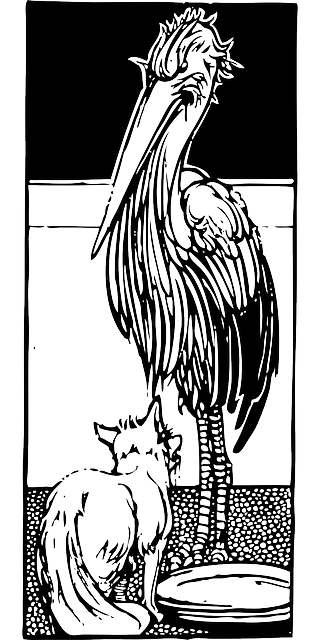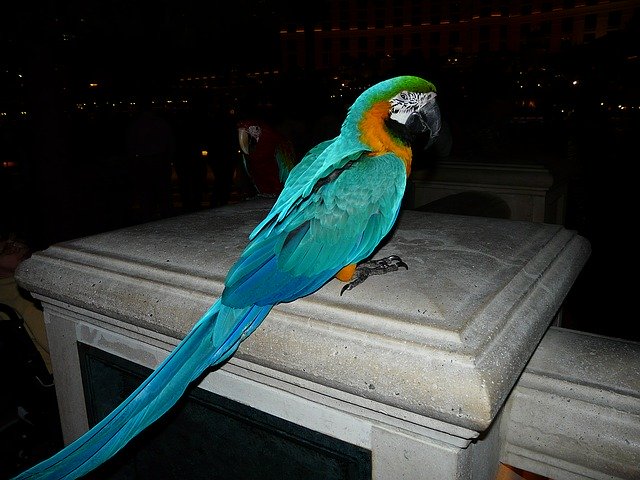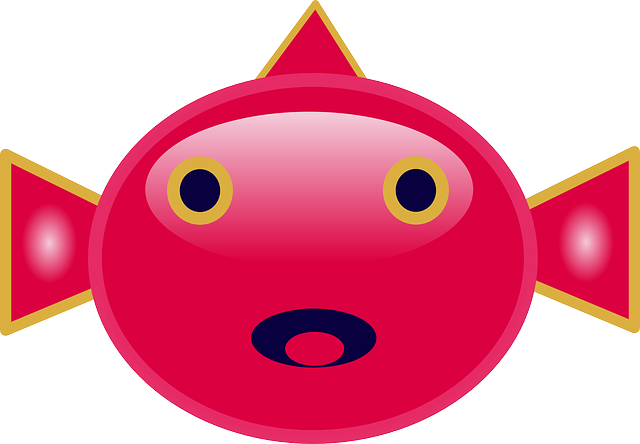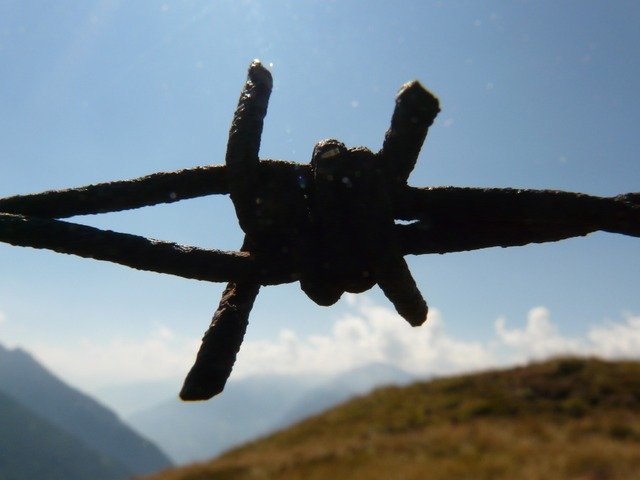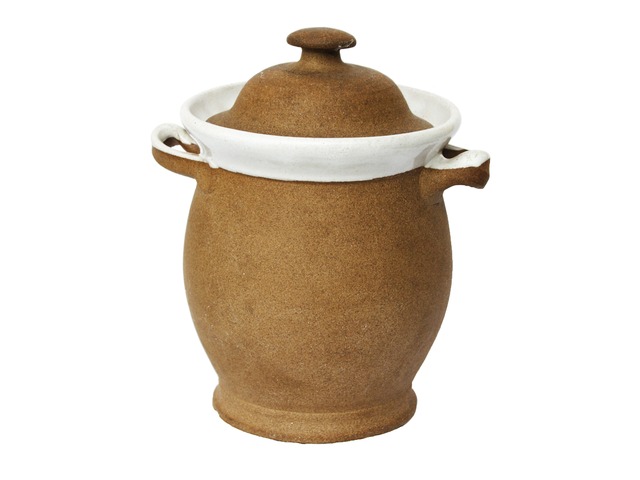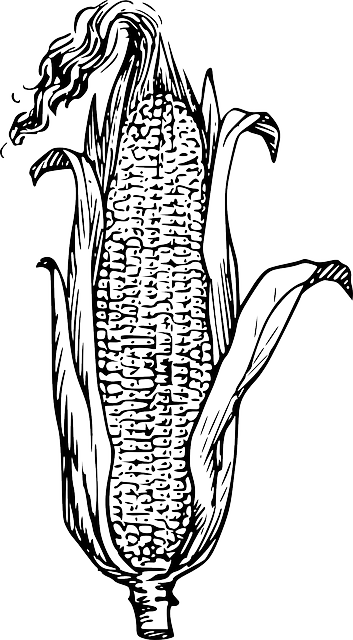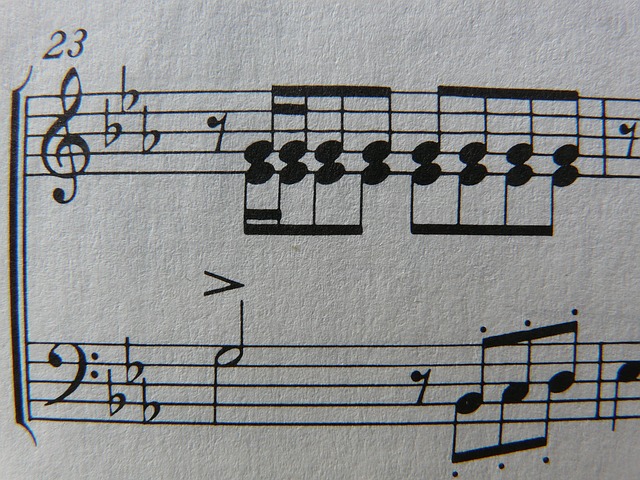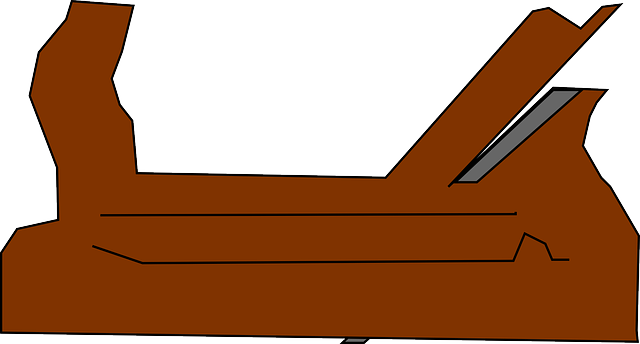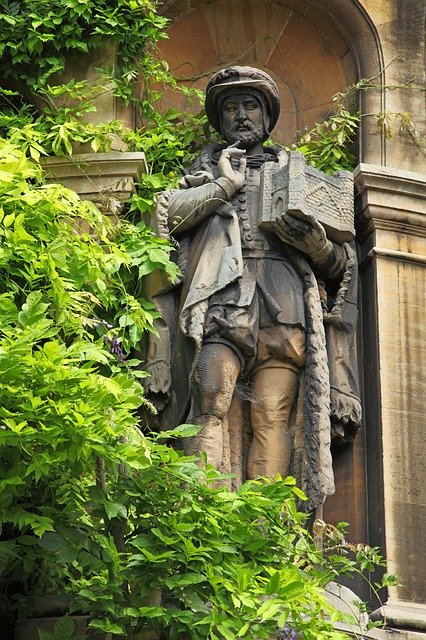تنين
خطأ لوا في وحدة:Effective_protection_level على السطر 60: attempt to index field 'TitleBlacklist' (a nil value).
التنين : هومن الكائنات الاسطورية وهوزاحف مجنح وفي بعض الاساطير لا يملك اجنحة, وينطق في بعض الاساطير بانه ينفث النار من فمه .
توجد بعض الزواحف التي تسمى بالتنين مثل (تنين الكومودوا) وسمي بذلك لضخامته وطوله ولوجود الشبه بينه وبين التنانين الاسطورية .
بعتبر التنين من الوحوش الشرسة الشريرة في معظم البلدان ، ولكن في الصين يعتبر من انبل الكائنات وهومثال للحكمة والقوة .
وثمة أنواع للتنانين في الأساطير العالمية :
- تنين طائر
- تنين زاحف ارضي (لا يمتلك اجنحة)
- تنين مائي (وهوالذي يسكن البحار والانهار)
Sources of inspiration for dragon myths
Africa
Egypt
In Egyptian mythology, Apep is a giant serpent who resides in the Duat, the Egyptian Underworld. The Bremner-Rhind papyrus, written in around 310 BC, preserves an account of a much older Egyptian tradition that the setting of the sun is caused by Ra descending to the Duat to battle Apep. In some accounts, Apep is as long as the height of eight men with a head made of flint. Thunderstorms and earthquakes were thought to be caused by Apep's roar and solar eclipses were thought to be the result of Apep attacking Ra during the daytime. In some myths, Apep is slain by the god Set.Nehebkau is another giant serpent who guards the Duat and aided Ra in his battle against Apep. Nehebkau was so massive in some stories that the entire earth was believed to rest atop his coils. Denwen is a giant serpent mentioned in the Pyramid Texts whose body was made of fire and who ignited a conflagration that nearly destroyed all the gods of the Egyptian pantheon. He was ultimately defeated by the Pharaoh, victory which affirmed the Pharaoh's divine right to rule.
The ouroboros was a well-known Egyptian symbol of a serpent swallowing its own tail. The precursor to the ouroboros was the "Many-Faced", a serpent with five heads, who, according to the Amduat, the oldest surviving Book of the Afterlife, was said to coil around the corpse of the sun god Ra protectively. The earliest surviving depiction of a "true" ouroboros comes from the gilded shrines in the tomb of Tutankhamun. In the early centuries AD, the ouroboros was adopted as a symbol by Gnostic Christians and chapter 136 of the Pistis Sophia, an early Gnostic text, describes "a great dragon whose tail is in its mouth". In medieval alchemy, the ouroboros became a typical western dragon with wings, legs, and a tail. A famous image of the dragon gnawing on its tail from the eleventh-century Codex Marcianus was copied in numerous works on alchemy.
Asia
South Asia
Druk (بالدزونگخا: འབྲུག་), also known as 'Thunder Dragon', is one of the National symbols of Bhutan. In the Dzongkha language, Bhutan is known as Druk Yul "Land of Druk", and Bhutanese leaders are called Druk Gyalpo, "Thunder Dragon Kings". The druk was adopted as an emblem by the Drukpa Lineage, which originated in Tibet and later spread to Bhutan.
East Asia
Chinese dragon
Archaeologist Zhōu Chong-Fa believes that the Chinese word for dragon is an onomatopoeia of the sound of thunder or lùhng in Cantonese.
The Chinese dragon (الصينية المبسطة: 龙; الصينية التقليدية: 龍; پنين: lóng) is the highest-ranking animal in the Chinese animal hierarchy. Its origins are vague, but its "ancestors can be found on Neolithic pottery as well as Bronze Age ritual vessels." A number of popular stories deal with the rearing of dragons. The Zuo zhuan, which was probably written during the Warring States period, describes a man named Dongfu, a descendant of Yangshu'an, who loved dragons and, because he could understand a dragon's will, he was able to tame them and raise them well. He served Emperor Shun, who gave him the family name Huanlong, meaning "Dragon-Raiser". In another story, Kongjia, the fourteenth emperor of the Xia dynasty, was given a male and a female dragon as a reward for his obedience to the god of heaven, but could not train them, so he hired a dragon-trainer named Liulei, who had learned how to train dragons from Huanlong. One day, the female dragon died unexpectedly, so Liulei secretly chopped her up, cooked her meat, and served it to the king, who loved it so much that he demanded Liulei to serve him the same meal again. Since Liulei had no means of procuring more dragon meat, he fled the palace.
One of the most famous dragon stories is about the Lord Ye Gao, who loved dragons obsessively, even though he had never seen one. He decorated his whole house with dragon motifs and, seeing this display of admiration, a real dragon came and visited Ye Gao, but the lord was so terrified at the sight of the creature that he ran away. In Chinese legend, the culture hero Fu Hsi is said to have been crossing the Lo River, when he saw the lung ma, a Chinese horse-dragon with seven dots on its face, six on its back, eight on its left flank, and nine on its right flank. He was so moved by this apparition that, when he arrived home, he drew a picture of it, including the dots. He later used these dots as letters and invented Chinese writing, which he used to write his book I Ching. In another Chinese legend, the physician Ma Shih Huang is said to have healed a sick dragon. Another legend reports that a man once came to the healer Lo Chên-jen, telling him that he was a dragon and that he needed to be healed. After Lo Chên-jen healed the man, a dragon appeared to him and carried him to heaven.
In the Shanhaijing, a classic mythography probably compiled mostly during the Han dynasty, various deities and demigods are associated with dragons. One of the most famous Chinese dragons is Ying Long ("Responding Dragon"), who helped the Huangdi, the Yellow Emperor, defeat the tyrant Chiyou. The dragon Zhulong ("Torch Dragon") is a god "who composed the universe with his body." In the Shanhaijing, many mythic heroes are said to have been conceived after their mothers copulated with divine dragons, including Huangdi, Shennong, Emperor Yao, and Emperor Shun. The god Zhurong and the emperor Qi are both described as being carried by two dragons, as are Huangdi, Zhuanxu, Yuqiang, and Roshou in various other texts. According to the Huainanzi, an evil black dragon once caused a destructive deluge, which was ended by the mother goddess Nüwa by slaying the dragon.
A large number of ethnic myths about dragons are told throughout China. The Houhanshu, compiled in the fifth century BC by Fan Ye, reports a story belonging to the Ailaoyi people, which holds that a woman named Shayi who lived in the region around Mount Lao became pregnant with ten sons after being touched by a tree trunk floating in the water while fishing. She gave birth to the sons and the tree trunk turned into a dragon, who asked to see his sons. The woman showed them to him, but all of them ran away except for the youngest, who the dragon licked on the back and named Jiu Long, meaning "Sitting Back". The sons later elected him king and the descendants of the ten sons became the Ailaoyi people, who tattooed dragons on their backs in honor of their ancestor. The Miao people of southwest China have a story that a divine dragon created the first humans by breathing on monkeys that came to play in his cave. The Han people have many stories about Short-Tailed Old Li, a black dragon who was born to a poor family in Shandong. When his mother saw him for the first time, she fainted and, when his father came home from the field and saw him, he hit him with a spade and cut off part of his tail. Li burst through the ceiling and flew away to the Black Dragon River in northeast China, where he became the god of that river. On the anniversary of his mother's death on the Chinese lunar calendar, Old Li returns home, causing it to rain. He is still worshipped as a rain god.
In China, dragons are closely associated with rain and drought is thought to be caused by a dragon's laziness. Prayers invoking dragons to bring rain are common in Chinese texts. The Luxuriant Dew of the Spring and Autumn Annals, attributed to the Han dynasty scholar Dong Zhongshu, proscribes making clay figurines of dragons during a time of drought and having young men and boys pace and dance among the figurines in order to encourage the dragons to bring rain. Texts from the Qing dynasty advise hurling the bone of a tiger or dirty objects into the pool where the dragon lives; since dragons cannot stand tigers or dirt, the dragon of the pool will cause heavy rain to drive the object out. Rainmaking rituals invoking dragons are still very common in many Chinese villages, where each village has its own god said to bring rain and many of these gods are dragons. Although stories of the Dragon Kings are among the most popular dragon stories in China today, these stories did not begin to emerge until the Eastern Han, when Buddhist stories of the serpent rain-god Nāga became popular.Taoists began to invent their own dragon kings and eventually such stories developed in every major Chinese religion. According to these stories, every body of water is ruled by dragon king, each with a different power, rank, and ability, so people began establishing temples across the countryside dedicated to these figures.
Many traditional Chinese customs revolve around dragons. During various holidays, including the Spring Festival and Lantern Festival, villagers will construct an approximately sixteen-foot-long dragon from grass, cloth, bamboo strips, and paper, which they will parade through the city as part of a dragon dance. The original purpose of this ritual was to bring good weather and a strong harvest, but now it is done mostly only for entertainment. During the Duanwu festival, several villages, or even a whole province, will hold a dragon boat race, in which people race across a body of water in boats carved to look like dragons, while a large audience watches on the banks. The custom is traditionally said to have originated after the poet Qu Yuan committed suicide by drowning himself in the Miluo River and people raced out in boats hoping to save him, but most historians agree that the custom actually originated much earlier as a ritual to avert ill fortune. Starting during the Han dynasty and continuing until the Qing dynasty, the Chinese emperor gradually became closely identified with dragons, and emperors themselves claimed to be the incarnation of a divine dragon. Eventually, dragons were only allowed to appear on clothing, houses, and articles of everyday use belonging to the emperor and any commoner who possessed everyday items bearing the image of the dragon were ordered to be executed. After the last Chinese emperor was overthrown in 1911, this situation changed and now many ordinary Chinese people identify themselves as descendants of dragons.
Silk painting depicting a man riding a dragon, dated to 5th-3rd century BC.
Tang dynasty painting of a dragon boat race attributed to Li Zhaodao
Flag of the Qing dynasty from 1889 to 1912, showing a Chinese dragon
Dragon sculpture on top of Lungshan Temple, Taipei, Taiwan
Chinese dragon in Fengdu Ghost City, China
Members of the Chinese Youth Society of Melbourne performing for Chinese New Year, at Crown Casino, demonstrate a basic "corkscrew" routine
Korean dragon
The Korean dragon is in many ways similar in appearance to other East Asian dragons such as the Chinese and Japanese dragons. It differs from the Chinese dragon in that it developed a longer beard. Very occasionally a dragon may be depicted as carrying an orb known as the Yeouiju (여의주), the Korean name for the mythical Cintamani, in its claws or its mouth. It was said that whoever could wield the Yeouiju was blessed with the abilities of omnipotence and creation at will, and that only four-toed dragons (who had thumbs with which to hold the orbs) were both wise and powerful enough to wield these orbs, as opposed to the lesser, three-toed dragons. As with China, the number nine is significant and auspicious in Korea, and dragons were said to have 81 (9×9) scales on their backs, representing yang essence. Dragons in Korean mythology are primarily benevolent beings related to water and agriculture, often considered bringers of rain and clouds. Hence, many Korean dragons are said to have resided in rivers, lakes, oceans, or even deep mountain ponds. And human journeys to undersea realms, and especially the undersea palace of the Dragon King (용왕), are common in Korean folklore.
In Korean myths, some kings who founded kingdoms were described as descendants of dragons because dragon was a symbol of the monarch. Lady Aryeong, who first queen of Silla said to have been born from a cockatrice, while the grandmother of Taejo of Goryeo, founder of Goryeo, was reportedly the daughter of the dragon king of the West Sea. And King Munmu of Silla, who on his deathbed wished to become a dragon of the East Sea in order to protect the kingdom. Dragon patterns were used exclusively by the royal family. The royal robe was also called the dragon robe (용포). In Joseon Dynasty, the royal insignia, featuring embroidered dragons, were attached to the robe's shoulders, the chest, and back. The King wore five-taloned dragon insignia while the Crown Prince wore four-taloned dragon insignia.
Japanese dragon
Japanese dragon myths amalgamate native legends with imported stories about dragons from China, Korea and India. Like these other Asian dragons, most Japanese ones are water deities associated with rainfall and bodies of water, and are typically depicted as large, wingless, serpentine creatures with clawed feet. Gould writes (1896:248), the Japanese dragon is "invariably figured as possessing three claws". A story about the samurai Minamoto no Mitsunaka tells that, while he was hunting in his own territory of Settsu, he fell asleep under a tree and had a dream in which a beautiful woman appeared to him and begged him to save her land from a giant serpent which was defiling it. Mitsunaka agreed to help and the maiden gave him a magnificent horse. When he woke up, the horse was standing before him. He rode it to the Sumiyoshi temple, where he prayed for eight days. Then he confronted the serpent and slew it with an arrow.
Vietnamese dragon
This section does not cite any references or sources. (January 2019)
|
According to an ancient origin myth, the Vietnamese people are descended from a dragon and a fairy. To Vietnamese people, the dragon brings rain, essential for agriculture. It represents the emperor, the prosperity and power of the nation. Like the Chinese dragon, the Vietnamese dragon is the symbol of yang, representing the universe, life, existence, and growth.
West Asia
Ancient West Asia
Mesopotamia
Ancient peoples across the Near East believed in creatures similar to what modern people call "dragons". These ancient peoples were unaware of the existence of dinosaurs or similar creatures in the distant past. References to dragons of both benevolent and malevolent characters occur throughout ancient Mesopotamian literature. In Sumerian poetry, great kings are often compared to the ušumgal, a gigantic, serpentine monster. A dragon-like creature with the foreparts of a lion and the hind-legs, tail, and wings of a bird appears in Mesopotamian artwork from the Akkadian Period (ح. 2334 – 2154 BC) until the Neo-Babylonian Period (626 BC–539 BC). The dragon is usually shown with its mouth open. It may have been known as the (ūmu) nā’iru, which means "roaring weather beast", and may have been associated with the god Ishkur (Hadad). A slightly different lion-dragon with two horns and the tail of a scorpion appears in art from the Neo-Assyrian Period (911 BC–609 BC). A relief probably commissioned by Sennacherib shows the gods Ashur, Sin, and Adad standing on its back.
Another dragon-like creature with horns, the body and neck of a snake, the forelegs of a lion, and the hind-legs of a bird appears in Mesopotamian art from the Akkadian Period until the Hellenistic Period (323 BC–31 BC). This creature, known in Akkadian as the mušḫuššu, meaning "furious serpent", was used as a symbol for particular deities and also as a general protective emblem. It seems to have originally been the attendant of the Underworld god Ninazu, but later became the attendant to the Hurrian storm-god Tishpak, as well as, later, Ninazu's son Ningishzida, the Babylonian national god Marduk, the scribal god Nabu, and the Assyrian national god Ashur.
Scholars disagree regarding the appearance of Tiamat, the Babylonian goddess personifying primeval chaos slain by Marduk in the Babylonian creation epic Enûma Eliš. She was traditionally regarded by scholars as having had the form of a giant serpent, but several scholars have pointed out that this shape "cannot be imputed to Tiamat with certainty" and she seems to have at least sometimes been regarded as anthropomorphic. Nonetheless, in some texts, she seems to be described with horns, a tail, and a hide that no weapon can penetrate, all features which suggest she was conceived as some form of dragoness.
Levant
In the Ugaritic Baal Cycle, the sea-dragon Lōtanu is described as "the twisting serpent/ the powerful one with seven heads." In KTU 1.5 I 2–3, Lōtanu is slain by the storm-god Baal, but, in KTU 1.3 III 41–42, he is instead slain by the virgin warrior goddess Anat. In the Book of Psalms, Psalm 74, Psalm 74:13–14, the sea-dragon Leviathan, whose name is a cognate of Lōtanu, is slain by Yahweh, the national god of the kingdoms of Israel and Judah, as part of the creation of the world. In Isaiah 27:1, Yahweh's destruction of Leviathan is foretold as part of Yahweh's impending overhaul of the universal order:
| Original Hebrew text (Isaiah 27:1) | English translation |
|
א בַּיּוֹם הַהוּא יִפְקֹד יְהוָה בְּחַרְבּוֹ הַקָּשָׁה וְהַגְּדוֹלָה וְהַחֲזָקָה, עַל לִוְיָתָן נָחָשׁ |
On that day Yahweh shall punish |
Job 41:1–34 contains a detailed description of the Leviathan, who is described as being so powerful that only Yahweh can overcome it.Job 41:19–21 states that the Leviathan exhales fire and smoke, making its identification as a mythical dragon clearly apparent. In some parts of the Old Testament, the Leviathan is historicized as a symbol for the nations that stand against Yahweh. Rahab, a synonym for "Leviathan", is used in several Biblical passages in reference to Egypt.Isaiah 30:7 declares: "For Egypt's help is worthless and empty, therefore I have called her 'the silenced Rahab'." Similarly, Psalm 87:3 reads: "I reckon Rahab and Babylon as those that know me..." In Ezekiel 29:3–5 and 32:2–8, the pharaoh of Egypt is described as a "dragon" (tannîn). In the story of Bel and the Dragon from the apocryphal additions to Daniel, the prophet Daniel sees a dragon being worshipped by the Babylonians. Daniel makes "cakes of pitch, fat, and hair"; the dragon eats them and bursts open (Daniel 14:23–30).
Post-classical West Asia
In Sufi literature, Rumi writes in his Masnavi (III: 976-1066; IV: 120) that the dragon symbolizes the sensual soul, greed and lust, that need to be mortified in a spiritual battle.
In Ferdowsi's Shahnameh, the Iranian hero Rostam must slay an 80-meter long dragon (which renders itself invisible to human sight) with the aid of his legendary horse, Rakhsh. As Rostam is sleeping, the dragon approaches; Rakhsh attempts to wake Rostam, but fails to alert him to the danger until Rostam sees the dragon. Rakhsh bites the serpent, while Rostam decapitates it. This is the third trial of Rostam's Seven Labors.
Rostam is also credited with the slaughter of other dragons in the Shahnameh and in other Iranian oral traditions, notably in the myth of Babr-e-Bayan. In this tale, Rostam is still an adolescent and kills a dragon in the "Orient" (either India or China depending on the source) by forcing it to swallow either ox hides filled with quicklime and stones or poisoned blades. The dragon swallows these foreign objects and its stomach bursts, after which Rostam flays the dragon and fashions a coat from its hide called the babr-e bayān. In some variants of the story, Rostam then remains unconscious for two days and nights, but is guarded by his steed Rakhsh. On reviving, he washes himself in a spring. In the Mandean tradition of the story, Rostam hides in a box, is swallowed by the dragon and kills it from inside its belly. The king of China then gives Rostam his daughter in marriage as a reward.
Europe
Proto-Indo-European
Ancient Greece and Rome
The ancient Greek word usually translated as "dragon" (δράκων drákōn, genitive δράκοντοϛ drákontos) could also mean "snake", but it usually refers to a kind of giant serpent that either possesses supernatural characteristics or is otherwise controlled by some supernatural power. The first mention of a "dragon" in ancient Greek literature occurs in the Iliad, in which Agamemnon is described as having a blue dragon motif on his sword belt and an emblem of a three-headed dragon on his breast plate. In lines 820–880 of the Theogony, a Greek poem written in the seventh century BC by the Boeotian poet Hesiod, the Greek god Zeus battles the monster Typhon, who has one hundred serpent heads that breathe fire and speak all kinds of frightening animal noises. Zeus scorches all of Typhon's heads with his lightning bolts and then hurls Typhon into Tartarus. In the Homeric Hymn to Apollo, the god Apollo uses his poisoned arrows to slay the serpent Python, who has been causing death and pestilence in the area around Delphi. Apollo then sets up his shrine there.
The Roman poet Virgil in his poem lines 163-201 [1], describing a shepherd having a fight with a big constricting snake, calls it "serpens" and also "draco", showing that in his time the two words were probably interchangeable.
Hesiod also mentions that the hero Heracles slew the Lernaean Hydra, a multiple-headed serpent which dwelt in the swamps of Lerna. The name "Hydra" means "water snake" in Greek. According to the Bibliotheka of Pseudo-Apollodorus, the slaying of the Hydra was the second of the Twelve Labors of Heracles. Accounts disagree on which weapon Heracles used to slay the Hydra, but, by the end of the sixth century BC, it was agreed that the clubbed or severed heads needed to be cauterized to prevent them from growing back. Heracles was aided in this task by his nephew Iolaus. During the battle, a giant crab crawled out of the marsh and pinched Heracles's foot, but he crushed it under his heel.Hera placed the crab in the sky as the constellation Cancer. One of the Hydra's heads was immortal, so Heracles buried it under a heavy rock after cutting it off. For his Eleventh Labor, Heracles must procure a golden apple from the tree in the Garden of the Hesperides, which is guarded by an enormous serpent that never sleeps, which Pseudo-Apollodorus calls "Ladon". In earlier depictions, Ladon is often shown with many heads; the mythographer Pherecydes of Leros describes him as having one hundred heads, a description which is repeated by Pseudo-Apollodorus. In Pseudo-Apollodorus's account, Ladon is immortal, but Sophocles and Euripides both describe Heracles as killing him, although neither of them specifies how. The mythographer Herodorus is the first to state that Heracles slew him using his famous club.Apollonius of Rhodes, in his epic poem the Argonautica, describes Ladon as having been shot full of poisoned arrows dipped in the blood of the Hydra.
In Pindar's Fourth Pythian Ode, Aeëtes of Colchis tells the hero Jason that the Golden Fleece he is seeking is in a copse guarded by a dragon, "which surpassed in breadth and length a fifty-oared ship". Jason slays the dragon and makes off with the Golden Fleece together with his co-conspirator, Aeëtes's daughter, Medea. The earliest artistic representation of this story is an Attic red-figure kylix dated to ح. 480–470 BC, showing a bedraggled Jason being disgorged from the dragon's open mouth as the Golden Fleece hangs in a tree behind him and Athena, the goddess of wisdom, stands watch. A fragment from Pherecydes of Leros states that Jason killed the dragon, but fragments from the Naupactica and from Herodorus state that he merely stole the Fleece and escaped. In Euripides's Medea, Medea boasts that she killed the Colchian dragon herself. In the most famous retelling of the story from Apollonius of Rhodes's Argonautica, Medea drugs the dragon to sleep, allowing Jason to steal the Fleece. Greek vase paintings show her feeding the dragon the sleeping drug in a liquid form from a phialē, or shallow cup.
In the founding myth of Thebes, Cadmus, a Phoenician prince, was instructed by Apollo to follow a heifer and found a city wherever it laid down. Cadmus and his men followed the heifer and, when it laid down, Cadmus ordered his men to find a spring so he could sacrifice the heifer to Athena. His men found a spring, but it was guarded by a dragon, which had been placed there by the god Ares, and the dragon killed them. Cadmus killed the dragon in revenge, either by smashing its head with a rock or using his sword. Following the advice of Athena, Cadmus tore out the dragon's teeth and planted them in the earth. An army of giant warriors (known as spartoi, which means "sown men") grew from the teeth like plants. Cadmus hurled stones into their midst, causing them to kill each other until only five were left. To make restitution for having killed Ares's dragon, Cadmus was forced to serve Ares as a slave for eight years. At the end of this period, Cadmus married Harmonia, the daughter of Ares and Aphrodite. Cadmus and Harmonia moved to Illyria, where they ruled as king and queen, before eventually being transformed into dragons themselves.
In the fifth century BC, the Greek historian Herodotus reported in Book IV of his Histories that western Libya was inhabited by monstrous serpents and, in Book III, he states that Arabia was home to many small, winged serpents, which came in a variety of colors and enjoyed the trees that produced frankincense. Herodotus remarks that the serpent's wings were like those of bats and that, unlike vipers, which are found in every land, winged serpents are only found in Arabia. The second-century BC Greek astronomer Hipparchus (ح. 190 BC – ح. 120 BC) listed the constellation Draco ("the dragon") as one of forty-six constellations. Hipparchus described the constellation as containing fifteen stars, but the later astronomer Ptolemy (ح. 100 – ح. 170 AD) increased this number to thirty-one in his Almagest.
In the New Testament, Revelation 12:3 9, written by John of Patmos, describes a vision of a Great Red Dragon with seven heads, ten horns, seven crowns, and a massive tail, an image which is clearly inspired by the vision of the four beasts from the sea in the Book of Daniel and the Leviathan described in various Old Testament passages. The Great Red Dragon knocks "a third of the sun... a third of the moon, and a third of the stars" out the sky and pursues the Woman of the Apocalypse.Revelation 12:7–9تسعة declares: "And war broke out in Heaven. Michael and his angels fought against Dragon. Dragon and his angels fought back, but they were defeated, and there was no longer any place for them in Heaven. Dragon the Great was thrown down, that ancient serpent who is called Devil and Satan, the one deceiving the whole inhabited World – he was thrown down to earth and his angels were thrown down with him." Then a voice booms down from Heaven heralding the defeat of "the Accuser" (ho Kantegor).
In 217 AD, Flavius Philostratus discussed dragons (δράκων, drákōn) in India in The Life of Apollonius of Tyana (II,17 and III,6–8). The Loeb Classical Library translation (by F.C. Conybeare) mentions (III,7) that "In most respects the tusks resemble the largest swine's, but they are slighter in build and twisted, and have a point as unabraded as sharks' teeth." According to a collection of books by Claudius Aelianus called On Animals, Ethiopia was inhabited by a species of dragon that hunted elephants and could grow to a length of 180 feet (55 m) with a lifespan rivaling that of the most enduring of animals.
Post-classical Germanic mythology
In the Old Norse poem Grímnismál in the Poetic Edda, the dragon Níðhöggr is described as gnawing on the roots of Yggdrasil, the world tree. In Norse mythology, Jörmungandr is a giant serpent that encircles the entire realm of Miðgarð in the sea around it. According to the Gylfaginning from the Prose Edda, written by the thirteenth-century Icelandic mythographer Snorri Sturluson, Thor, the Norse god of thunder, once went out on a boat with the giant Hymnir to the outer sea and fished for Jörmungandr using an ox-head as bait. Thor caught the serpent and, after pulling its head out of the water, smashed it with his hammer Mjölnir. Snorri states that the blow was not fatal: "and men say that he struck its head off on the sea bed. But I think the truth to tell you is that the Miðgarð Serpent still lives and lies in the surrounding sea."
Towards the end of the Old English epic poem Beowulf, a slave steals a cup from the hoard of a sleeping dragon, causing the dragon to wake up and go on a rampage of destruction across the countryside. The eponymous hero of the poem insists on confronting the dragon alone, even though he is of advanced age, but Wiglaf, the youngest of the twelve warriors Beowulf has brought with him, insists on accompanying his king into the battle. Beowulf's sword shatters during the fight and he is mortally wounded, but Wiglaf comes to his rescue and helps him slay the dragon. Beowulf dies and tells Wiglaf that the dragon's treasure must be buried rather than shared with the cowardly warriors who did not come to the aid of their king.
In the Old Norse Völsunga saga, the hero Sigurd catches the dragon Fafnir by digging a pit between the cave where he lives and the spring where he drinks his water and kills him by stabbing him in the underside. At the advice of Odin, Sigurd drains Fafnir's blood and drinks it, which gives him the ability to understand the language of the birds, who he hears talking about how his mentor Regin is plotting to betray him so that he can keep all of Fafnir's treasure for himself. The motif of a hero trying to sneak past a sleeping dragon and steal some of its treasure is common throughout many Old Norse sagas. The fourteenth-century Flóres saga konungs ok sona hans describes a hero who is actively concerned not to wake a sleeping dragon while sneaking past it. In the Yngvars saga víðförla, the protagonist attempts to steal treasure from several sleeping dragons, but accidentally wakes them up.
Post-classical Western Europe
Post-classical Eastern Europe
In Slavic mythology, the words "zmey", "zmiy" or "zmaj" are used to describe dragons. These words are masculine forms of the Slavic word for "snake", which are normally feminine (like Russian zmeya). In Romania, there is a similar figure, derived from the Slavic dragon and named zmeu. Exclusively in Polish and Belarusian folklore, as well as in the other Slavic folklores, a dragon is also called (variously) смок, цмок, or smok. In South Slavic folklores, the same thing is also called lamya (ламя, ламjа, lamja). Although quite similar to other European dragons, Slavic dragons have their peculiarities.
تصويرات معاصرة
Dragons and dragon motifs are featured in many works of modern literature, particularly within the fantasy genre.
انظر أيضاً
- بوابة Mythology
- Balaur
- Bat (heraldry)
- Behemoth
- Dinosaur
- Dragonology
- Feilong (mythology)
- Guivre
- Ichneumon (medieval zoology)
- Mokele-mbembe
- Partridge Creek monster
- Snallygaster
- The Last Dragon, fictional 2004 documentary
- List of dragons in literature
- List of dragons in mythology and folklore
- List of dragons in popular culture
ملاحظات
مراجع
- ^ Ogden 2013.
- ^ Niles 2013.
- ^ Hornung 2001.
- ^ Waddell, Laurence (1895). . p. 199. ISBN .
- ^ People's Daily On-line (2001), "Chinese Dragon Originates From Primitive Agriculture: Archaeologist". Retrieved June 5, 2011.
- ^ Guan, Caihua. (2001) English-Cantonese Dictionary: Cantonese in Yale Romanization. ISBN 9622019706.
- ^ Welch, Patricia Bjaaland. Chinese Art: A Guide to Motifs and Visual Imagery, Tuttle Publishing, 2008, p. 121
- ^ Yang, An & Turner 2005.
- ^ Volker 1975.
- ^ Hayward, Philip (2018). Scaled for Success: The Internationalisation of the Mermaid. Indiana University Press. ISBN .
- ^ Samguk yusa
- ^ The book of the genealogy of Taejo of Goryeo - Pyeonnyeon-Tong-Long (편년통록)
- ^ 우리 옷 만들기. Sungshin Women's University Press. 2004. pp. 25–26. ISBN .
- ^ Gould, Charles. 1896. Mythical Monsters". W. H. Allen & Co.
- ^ Black & Green 1992.
- ^ Fontenrose 1980.
- ^ Ballentine 2015.
- ^ Day 2002.
- ^ Morgan 2009.
- ^ Savi, Julio (2008). Towards the Summit of Reality. Oxford, UK: George Ronald. ISBN . OL 23179261M.
- ^ Schimmel, Annemarie (1975). . Chapel Hill: University of North Carolina Press. ISBN . LCCN 73016112. OL 5422370M.
- ^ "Rakhsh helping Rostam defeat the dragon". British Library.
- ^ "Rustam killing a dragon". British Museum.
- ^ "Shahname Synopsis". British Library.
- ^ "Azdaha". Encyclopedia Iranica.
- ^ "Babr-e-Bayan". Encyclopedia Iranica.
- ^ Chad Hartsock, Sight and Blindness in Luke-Acts: The Use of Physical Features in Characterization, Brill, Leiden-Boston, 2008, pp. 193–4.
- ^ Drury, Nevill, The Dictionary of the Esoteric, Motilal Banarsidass Publ., 2003 ISBN 81-208-1989-6, p.79.
- ^ West 2007.
- ^ Deacy 2008.
- ^ Mayor 2000.
- ^ Charlesworth 2010.
- ^ Jones 2000.
- ^ Grasshoff 1990.
- ^ Kelly 2006.
- ^ "ETHIOPIAN DRAGON (Drakon Aithiopikos) – Giant Serpent of Greek & Roman Legend". Retrieved 30 December 2016.
- ^ MacCulloch 1998.
- ^ Rauer 2000.
- ^ Haimerl 2013.
- ^ Malone 2012.
- ^ Williamson 2015.
ببليوگرافيا
- Anthony, David W. (2007), The Horse, the Wheel, and Language: How Bronze-Age Riders from the Eurasian Steppes Shaped the Modern World, Princeton, England: Princeton University Press, ISBN 978-0691148182, https://books.google.com/books?id=rOG5VcYxhiEC
- Bates, Roy. Chinese Dragons. Oxford University Press, 2002. ISBN 0-195-92856-3.
- Berman, Ruth (1984). "Dragons for Tolkien and Lewis". Mythlore. East Lansing, Michigan: Mythopoeic Society. 11: 53–58.
- Ballentine, Debra Scoggins (2015), The Conflict Myth and the Biblical Tradition, Oxford, England: Oxford University Press, ISBN 978-0-19-937025-2, https://books.google.com/?id=JLq6BwAAQBAJ&pg=PA130&dq=Leviathan+Yahweh#v=onepage&q=Leviathan%20Yahweh&f=false
- Berman, Ruth (1984). "Victorian Dragons". Children's Literature in Education. 15: 220–233. doi:10.1007/BF01137186.
- Black, Jeremy; Green, Anthony (1992), Gods, Demons and Symbols of Ancient Mesopotamia: An Illustrated Dictionary, The British Museum Press, ISBN 0-7141-1705-6, https://books.google.com/?id=05LXAAAAMAAJ&q=Inana
- Blount, Margaret Joan (1975). "Dragons". . New York: William Morrow. pp. 116–130. ISBN .
- Charlesworth, James H. (2010), The Good and Evil Serpent: How a Universal Symbol Became Christianized, New Haven, Connecticut: Yale University Press, ISBN 978-0-300-14082-8, https://books.google.com/?id=cJlmWuXCCecC&pg=PA170&dq=Herodotus+winged+serpents#v=onepage&q=Herodotus%20winged%20serpents&f=false
- Cipa, Shawn (2008), Carving Gargoyles, Grotesques, and Other Creatures of Myth: History, Lore, and 12 Artistic Patterns, Petersburg, Pennsylvania: Fox Chapel Publishing Inc., ISBN 978-1-56523-329-4
- Day, John (2002), Yahweh and the Gods and Goddesses of Canaan, Continuum, ISBN 9780567537836, https://books.google.com/?id=2xadCgAAQBAJ&pg=PA103&dq=tannim+Yahweh#v=onepage&q=tannim%20Yahweh&f=false
- Deacy, Susan (2008), Athena, London and New York: Routledge, ISBN 978-0-415-30066-7, https://books.google.com/?id=kIiCAgAAQBAJ&pg=PA163&dq=Athena+and+Ares+Darmon#v=onepage&q=Athena%20and%20Ares%20Darmon&f=false
- Dębicka, Maria, Dragon's Den, http://www.wawel.krakow.pl/en/index.php?op=11, retrieved on 2018-03-31
- Dinsmoor, William Bell (1973), The Architecture of Ancient Greece: An Account of its Historic Development, New York City, New York: Biblo and Tannen, ISBN 978-0-8196-0283-1, https://books.google.com/?id=BqahvzeE39YC&printsec=frontcover&dq=The+Architecture+of+Ancient+Greece:+An+Account+of+its+Historic+Development+Gargoyle#v=onepage&q=spout&f=false
- Fee, Christopher R. (2011), Chance, Jane, ed., Mythology in the Middle Ages: Heroic Tales of Monsters, Magic, and Might, Praeger Series on the Middle Ages, Santa Barbara, California, Denver, Colorado, and Oxford, England, ISBN 978-0-313-02725-3, https://books.google.com/?id=Hkx472N8Bk8C&pg=PA7&dq=Dragons+in+Germanic+mythology#v=onepage&q=Dragons%20in%20Germanic%20mythology&f=false
- Fontenrose, Joseph Eddy (1980), Python: A Study of Delphic Myth and Its Origins, Berkeley, California, Los Angeles, California, and London, England: The University of California Press, ISBN 0-520-04106-2, https://books.google.com/?id=wqeVv09Y6hIC&pg=PA153&dq=Tiamat+dragon#v=onepage&q=Tiamat%20dragon&f=false
- Friar, Stephen; Ferguson, John (1993), Basic Heraldry, New York City, New York and London, England: W. W. Norton & Company, ISBN 0-393-03463-1, https://books.google.com/?id=ez8ZdOPxlukC&pg=PA28&dq=dragons+in+heraldry#v=onepage&q=dragons%20in%20heraldry&f=false
- Garrett, Valery M. Chinese Dragon Robes. Oxford University Press, 1999. ISBN 0-195-90499-0.
- Giammanco Frongia, Rosanna M.; Giorgi, Rosa; Zuffi, Stefano (2005). Angels and Demons in Art. Los Angeles: J. Paul Getty Museum. ISBN .
- Grasshoff, Gerd (1990), Toomer, Gerald, ed., The History of Ptolemy's Star Catalogue, Studies in the History of Mathematics and Physical Sciences, 14, New York City, New York, Berlin, Germany, Heidelberg, Germany, London, England, Paris, France, Tokyo, Japan, and Hong Kong, China: Springer-Verlag, ISBN 978-1-4612-8788-9, https://books.google.com/?id=pR_nBwAAQBAJ&pg=PA36&dq=Ptolemy+Draco+constellation#v=onepage&q=Ptolemy%20Draco%20constellation&f=false
- Haimerl, Edgar (2013), "Sigurðr, a Medieval Hero", in Acker, Paul; Larrington, Carolyne, Revisiting the Poetic Edda: Essays on Old Norse Heroic Legend, New York City, New York and London, England: Routledge, ISBN 978-0-203-09860-8
- Hanlon, Tina (2003). "The Taming of Dragons in Twentieth Century Picture Books". Journal of the Fantastic in the Arts. 14: 7–27.
- Hornung, Erik (2001), The Secret Lore of Egypt: Its Impact on the West, Ithaca, New York and London, England: Cornell University Press, ISBN 0-8014-3847-0, https://books.google.com/?id=SB_y56Vlz5kC&pg=PA75&dq=Ouroboros+dragon+ancient+Egypt#v=onepage&q=Ouroboros%20dragon%20ancient%20Egypt&f=false
- Hughes, Jonathan (2005), "Politics and the Occult in the Court of Edward IV", in Gosman, Martin; MacDonald, Alasdair; Vanderjagt, Arjo, Princes and Princely Culture: 1450-1650, Leiden, The Netherlands and Boston, Massachusetts: Brill, ISBN 90-04-13690-8
- Ingersoll, Ernest; Henry Fairfield Osborn (2013). The Illustrated Book of Dragons and Dragon Lore. Chiang Mai, Thailand: Cognoscenti Books. ISBN .
- Johnsgard, Paul Austin; Johnsgard, Karin (1982). . New York: St. Martin's Press. ISBN .
- Jones, David E. (2000), An Instinct for Dragons, New York City, New York and London, England: Routledge, ISBN 0-415-92721-8, https://books.google.com/books?id=P1uBUZupE9gC&lpg=PP1&pg=PP1#v=onepage&q=&f=false
- Kelly, Henry Ansgar (2006), Satan: A Biography, Cambridge, England: Cambridge University Press, ISBN 978-0521604024, https://books.google.com/?id=gPIpQg0lRbMC&pg=PA12&dq=intitle:satan+inauthor:kelly#v=onepage&q=&f=false
- Kitowska-Łysiak, Małgorzata; Wolicka, Elżbieta (1999), Miejsce rzeczywiste, miejsce wyobrażone: studia nad kategorią miejsca w przestrzeni kultury, Towarzystwo Naukowe Katolickiego Uniwersytetu Lubelskiego [Scientific Society of the Catholic University of Lublin], ISBN 9788387703745, https://books.google.com/books?id=F9h4AAAAMAAJ&q=%22Wawel%22
- Littleton, C. Scott (2002). Mythology: The Illustrated Anthology of World Myth and Storytelling. Thunder Bay Press (CA). ISBN .
- MacCulloch, J. A. (1998), The Celtic and Scandinavian Religions, Chicago, Illinois: Academy Chicago Publishers, ISBN 0-897-33-434-5, https://books.google.com/?id=xyWvBAAAQBAJ&pg=PA156&dq=Nidhogg+Prose+Edda#v=onepage&q=Nidhogg%20Prose%20Edda&f=false
- Mallory, J. P.; Adams, D.Q. (2006), The Oxford Introduction to Proto-Indo-European and the Proto-Indo-European World, Oxford, England: Oxford University Press, ISBN 978-0-19-929668-2
- Malone, Michael S. (2012), The Guardian of All Things: The Epic Story of Human Memory, New York City, New York: St. Martin's Press, ISBN 978-1-250-01492-4, https://books.google.com/?id=8i8WBXpf2BIC&pg=PA98&dq=dragons+in+western+Europe+during+the+Middle+Ages#v=onepage&q=dragons%20in%20western%20Europe%20during%20the%20Middle%20Ages&f=false
- Mayor, Andrienne (2000), The First Fossil Hunters: Dinosaurs, Mammoths, and Myth in Greek and Roman Times, Princeton, New Jersey: Princeton University Press, ISBN 0-691-05863-6, https://books.google.com/?id=9TwhfvU08UcC&printsec=frontcover&dq=The+first+fossil+hunters#v=onepage&q=The%20first%20fossil%20hunters&f=false
- Mayor, Adrienne (2005), Fossil Legends of the First Americans, Princeton, New Jersey: Princeton University Press, ISBN 0-691-11345-9, https://books.google.com/?id=CMsgQQkmFqQC&printsec=frontcover&dq=dinosaur+bones+in+the+Middle+East#v=onepage&q=dragon&f=false
- Morgan, Giles (21 January 2009), St George: Knight, Martyr, Patron Saint and Dragonslayer, Edison, New Jersey: Chartwell Books, Inc., ISBN 978-0785822325, https://books.google.com/books?id=KV7aDQAAQBAJ&q=dragon#v=snippet&q=dragon&f=false
- Manning-Sanders, Ruth (1977). . London: Methuen. ISBN .
- Nikolajeva, Maria (2012), "The development of children's fantasy", in James, Edward; Mendlesohn, Farah, The Cambridge Companion to Fantasy Literature, Cambridge, England: Cambridge University Press, pp. 50–61, ISBN 978-0-521-72873-7
- Niles, Doug (2013), Dragons: The Myths, Legends, and Lore, Avon, Massachusetts: Adams Media, ISBN 978-1-4405-6216-7, https://books.google.com/?id=8dRTAAAAQBAJ&printsec=frontcover&dq=Zmey+Gorynych+academic#v=onepage&q&f=false
- Ogden, Daniel (2013), , Oxford, England: Oxford University Press, ISBN 978-0-19-955732-5, https://books.google.com/?id=FQ2pAK9luwkC&printsec=frontcover&dq=ancient+Greek+dragons#v=onepage&q=ancient%20Greek%20dragons&f=false
- Osmond, Andrew (2002). "Dragons in Film". Cinefantastique. Vol. 34. pp. 58–59.
- Rauer, Christine (2000), Beowulf and the Dragon: Parallels and Analogues, Cambridge, England: D. S. Brewer, ISBN 0-85991-592-1, https://books.google.com/?id=wbzQ97DfsjIC&pg=PA85&dq=Dragons+in+Germanic+mythology#v=onepage&q=Dragons%20in%20Germanic%20mythology&f=false
- Rożek, Michał (1988), Cracow: A Treasury of Polish Culture and Art, Kraków, Poland: Interpress Publishers, p. 27, ISBN 9788322322451, https://books.google.com/books?id=7LlFAAAAIAAJ&q=%22wawel%22
- Schwab, Sandra Martina (2005). "Dragons". In Gary Westfahl (ed.). The Greenwood Encyclopedia of Science Fiction and Fantasy: Themes, Works, and Wonders. Vol. 1. Westport, CT: Greenwood Press. pp. 214–216. ISBN .
- Shuker, Karl (1995). Dragons: a Natural History. New York: Simon & Schuster. ISBN .
- Sikorski, Czesław (1997), "Wood Pitch as Combat Chemical in the Light of the Jan Długosz's Annals and Some of the Old Polish Military Treatises", Proceedings of the First International Symposium on Wood Tar and Pitch: 235
- Sherman, Josepha (2015), Storytelling: An Encyclopedia of Mythology and Folklore, New York City, New York and London, England: Routledge, ISBN 978-0-7656-8047-1, https://books.google.com/?id=n2-sBwAAQBAJ&pg=PA184&dq=Gargouille+medieval+folklore#v=onepage&q=Gargouille%20medieval%20folklore&f=false
- Swaddling, Judith (1989), The Ancient Olympic Games, London, England: British Museum Press, ISBN 0-292-77751-5, https://books.google.com/books?id=2-HQMnDiLqIC&q=gargoyle#v=onepage&q=spout&f=false
- Thurston, Herbert (1909), St. George, 6, New York City, New York: Robert Appleton Company, pp. 453–455, https://books.google.com/books?id=BFc_AQAAMAAJ&pg=PA453
- Unerman, Sandra (2000). "Dragons in Fantasy". Vector (211): 14–16.
- Visser, Marinus Willem de; , Amsterdam, J. Müller 1913.
- Volker, T. (1975), The Animal in Far Eastern Art: And Especially in the Art of the Japanese , Leiden, The Netherlands: Brill, ISBN 90-04-04295-4, https://books.google.com/?id=XyEVAAAAIAAJ&pg=PA64&dq=Fu+Hsi+dragon#v=onepage&q=Fu%20Hsi%20dragon&f=false
- Walter, Christopher (2003), The Warrior Saints in Byzantine Art and Tradition, Farnham, England: Ashgate Publishing, ISBN 9781840146943, https://books.google.com/books?id=ScafAAAAMAAJ
- West, Martin Litchfield (2007), Indo-European Poetry and Myth, Oxford, England: Oxford University Press, ISBN 978-0-19-928075-9
- Williamson, Jamie (2015), The Evolution of Modern Fantasy: From Antiquarianism to the Ballantine Adult Fantasy Series, New York City, New York and Basingstoke, England, doi:, ISBN 978-1-137-51579-7, https://books.google.com/?id=nGFOCgAAQBAJ&pg=PA28&dq=dragons+in+modern+fantasy#v=onepage&q=dragons%20in%20modern%20fantasy&f=false
- Yang, Lihui; An, Deming; Turner, Jessica Anderson (2005), Handbook of Chinese Mythology, Handbooks of World Mythology, Oxford, England: Oxford University Press, ISBN 978-0-19-533263-6, https://books.google.com/?id=gGD5go6iCUYC&pg=PA108&dq=Dragon+Kings+Chinese+mythology#v=onepage&q=Dragon%20Kings%20Chinese%20mythology&f=false
وصلات خارجية
نطقب:Dragons


